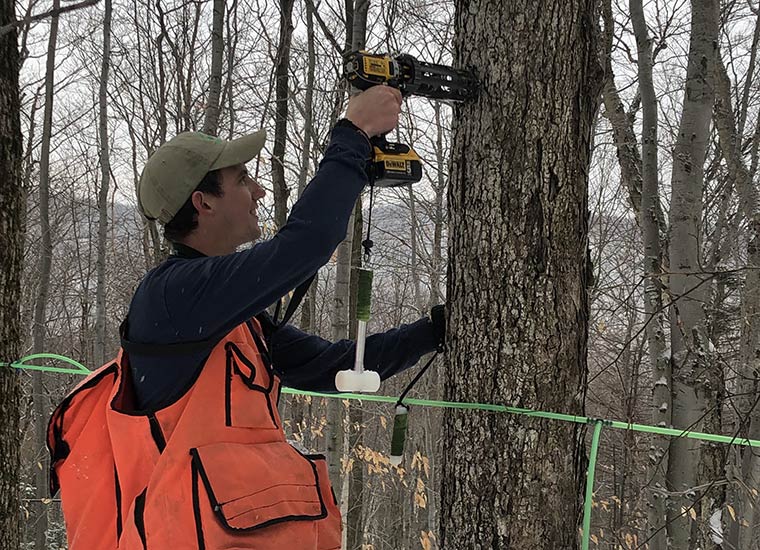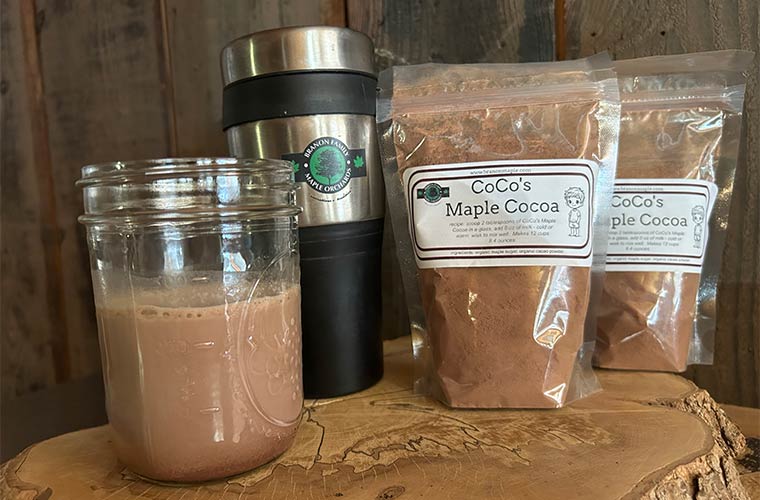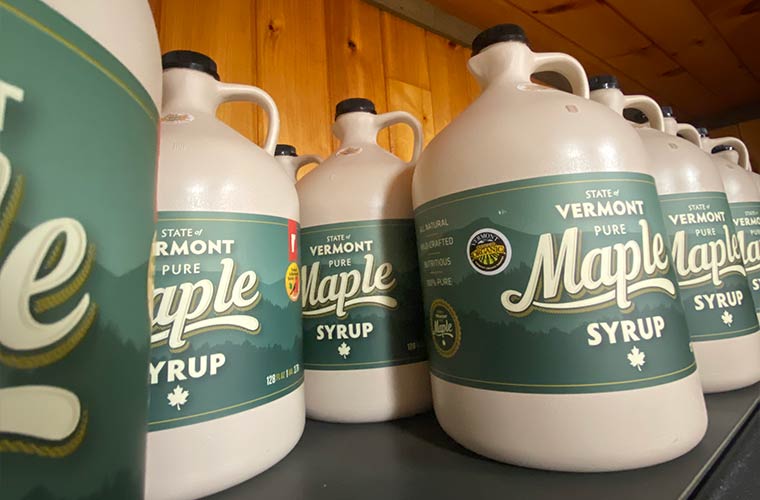CoCo’s Maple Cocoa and Buppy’s Bites. Like a constant buzz in the background, there’s this…

Behind The Boil: How Maple Sugarmakers Get Their Taps in Place
It used to be different.
Back in the day, Vermont’s maple syrup producers collected sap in tin buckets. They used draft horses to bring the sap they collected back to the sugarhouse. They boiled that sap using wood heat.
A general rule of thumb in Vermont’s maple production of yesteryear was that sugarmakers should have all their taps in by Town Meeting Day – a hyperlocal deep dive into small-town politics designed to conduct town business held every year across the Green Mountain State on the second Tuesday of March.
Oh, how things have changed. Although it’s still held, Town Meeting Day has morphed considerably, with mail-in ballots, virtual meetings, and a general acceptance of voting via Australian ballot instead of lengthy debates with town leaders in a packed school gym. And Vermont’s 21st-century sugarmakers, who’ve embraced vacuum tubing, computer monitoring of sap collection, and reverse osmosis boilers, now aim to have all of their taps in way before March rolls around.
“As our operation got bigger, we started aiming to start tapping by the first of January,” said Evan Branon, co-owner of Branon Family Orchards. “But that wasn’t early enough, so if the weather allows, we start tapping by December 15.”
One thing that hasn’t changed: All those technological advances modern-day sugarmakers utilize have yet to make tree tapping any less strenuous.
While much of the world hurries to finish their holiday shopping, Evan’s crew of six people head to the woods. Between mid-December and Valentine’s Day in February, they’ll put in 90,000 taps, cut away limbs and brush that have fallen on or interfered with the tubing, and repair tubing that’s been chewed by squirrels or pulled down by moose.
“As soon as the first good freeze-up hits, it’s go time,” said Evan.
A typical day begins at 7:30 a.m. and will end at about 3:30 p.m. – leaving enough time to get out of the woods before darkness approaches. Dressed for winter weather, each crew member wears an equipment vest that can weigh anywhere between 30-50 pounds. They carry tubing, an assortment of tools, hand saws, tap fittings, and Precision Tappers, an industry-leading device Evan invented that enables cordless drills to create perfectly shaped and places holes in the maple trees being tapped.
Data from Evan’s phone and fitness-tracking apps used by some of the Branon tapping crew reveal a jaw-dropping amount of physical activity.
“Our phones will show us walking between 8-10 miles a day and that’s not just flat land, either, ” Evan said. “We’ll average somewhere between the equivalent of 60-80 flights of stairs a day and we’ve got about 50 pounds of gear on.”
Evan estimates that one of his crew, working at an average work pace, can put in 300-400 taps a day. And that takes place for 6-8 work weeks when the weather allows.
Warm spells can delay tapping, not just because it’s hard to get into the muddy woods, but because sap will run in December and January. With taps in place, sugarmakers turn their attention to taking advantage of early sap runs.
The Branons boiled right around the start of 2023 as unusually warm weather allowed sap to run over the holidays. The Vermont media found the early start newsworthy.
“Since we started tapping early, we’ve usually gotten a run or two in December or January, ” Evan said. “It’s great that we can make some light, table-grade syrup early in the season, but it can interfere with our normal routine of tapping.” Then he laughed. “As if,” he chuckled, “there’s anything of a normal routine to tapping.”






















